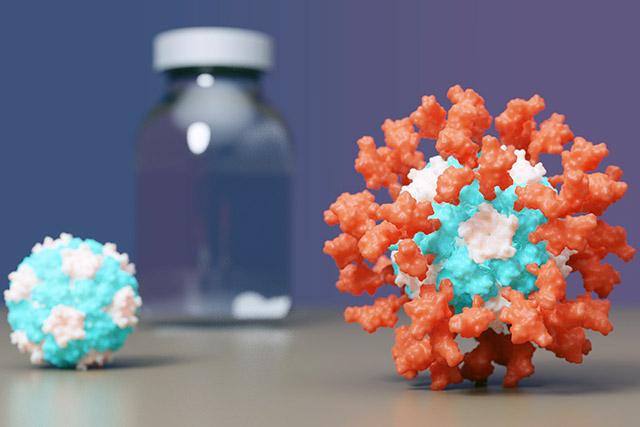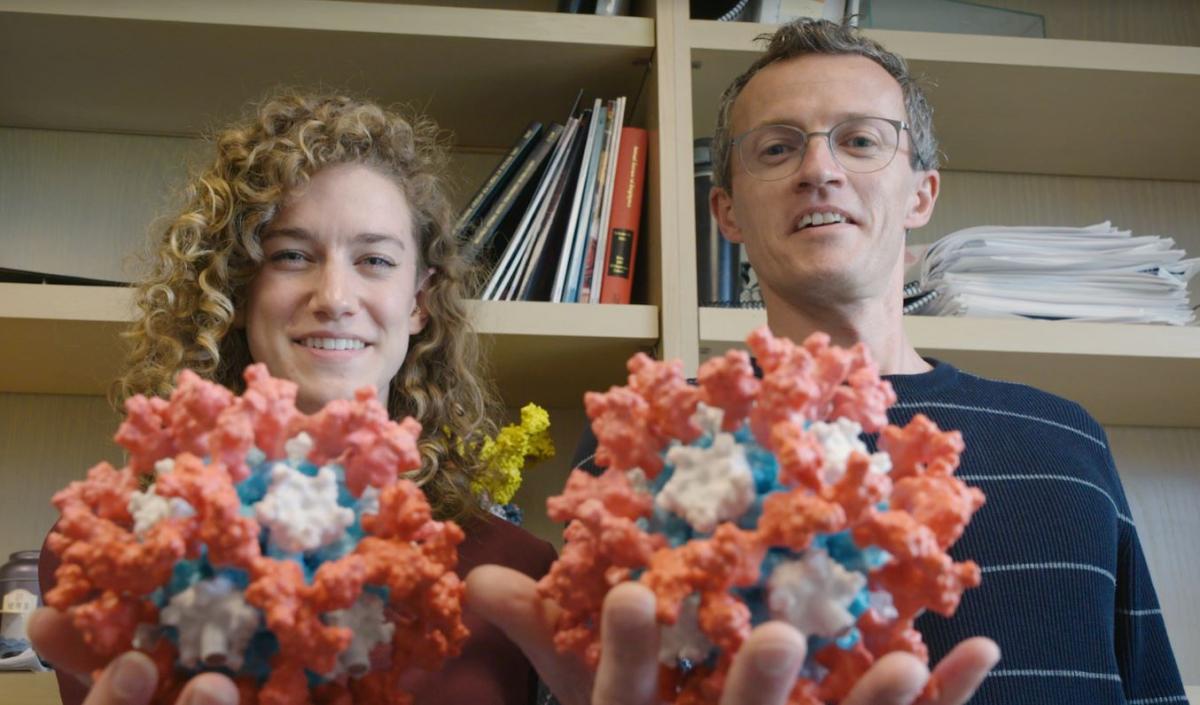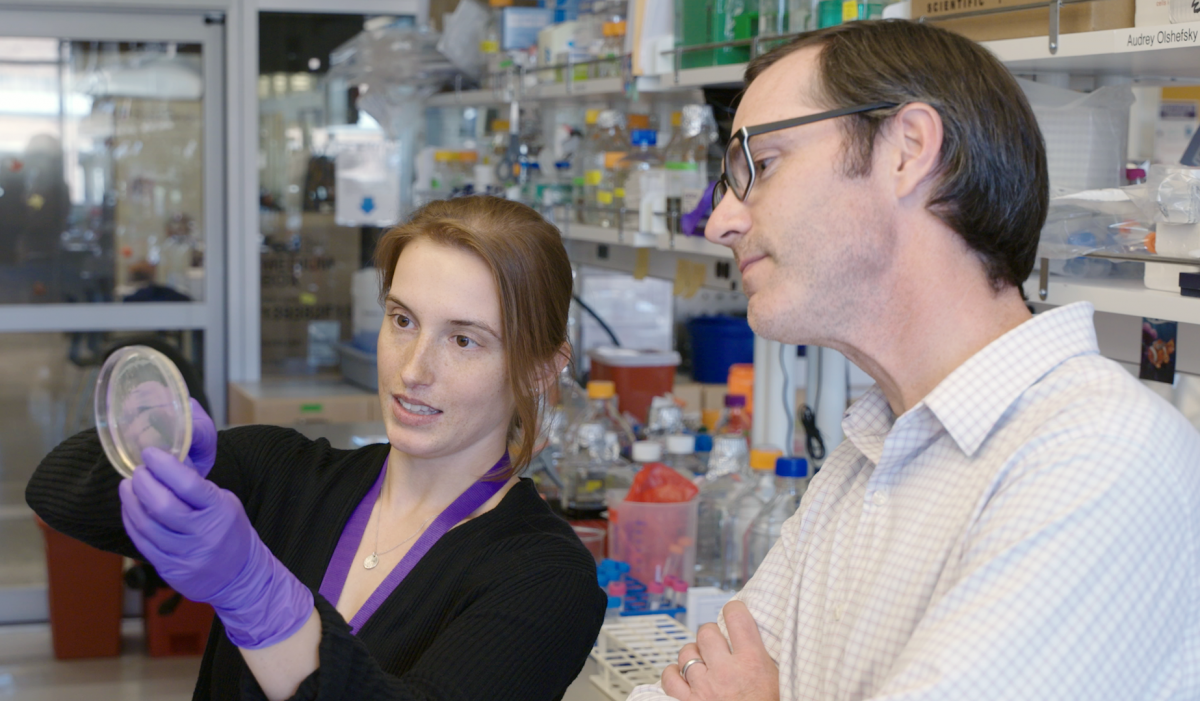
UW Medicine COVID-19 vaccine wins South Korea approval
SKbioscience’s SKYCovione vaccine becomes the first therapeutic OK'd for people to emerge from the Institute for Protein Design.Media Contact: Leila Gray - 206.475.9809, leilag@uw.edu

A vaccine for COVID-19 based on technology developed at the University of Washington School of Medicine in Seattle has been approved by the Korean Ministry of Food and Drug Safety for use in individuals 18 years of age and older.
It becomes the first clinical therapeutic approved for use in people to emerge from protein design efforts at UW Medicine.
The protein-based vaccine was found to be more effective than the Oxford/AstraZeneca vaccine sold under the brand names Covishield and Vaxzevria.
SK bioscience, the South Korean company leading the vaccine’s clinical development abroad, has trademarked their version SKYCovione.
Please see the SK bioscience news annoucement on South Korea's approval of the new vaccine.
SK bioscience is now seeking approval for SKYCovione’s use in the United Kingdom and beyond. If approved by the World Health Organization, the vaccine will be made available through COVAX, an abbreviation for COVID-19 Vaccines Global Access. COVAX is an international effort to equitably distribute COVID-19 vaccines around the world. In addition, the South Korean government has agreed to purchase 10 million doses for domestic use.
The Seattle scientists behind the new vaccine sought to create a second-generation COVID-19 vaccine that is safe, effective at low doses, simple to manufacture, and stable without deep freezing. These attributes could enable vaccination at a global scale by reaching people in areas where medical, transportation, and storage resources are difficult to obtain.
“We know more than two billion people worldwide have not received a single dose of vaccine,” said David Veesler, associate professor of biochemistry at UW School of Medicine and co-developer of the vaccine. “If our vaccine is distributed through COVAX, it will allow it to reach people who need access.”

The University of Washington is licensing the vaccine technology royalty-free for the duration of the pandemic.
A multinational Phase 3 trial involving 4,037 adults over 18 years of age found that the SKYCovione vaccine elicits roughly three times more neutralizing antibodies than the Oxford/AstraZeneca vaccine Covishield/Vaxzevria. In these studies, SKYCovione or Covishield/Vaxzevria was administered twice with an interval of four weeks.
In addition, the antibody conversion rate, which refers to the proportion of subjects whose virus-neutralizing antibody level increased fourfold or more after vaccination, was higher with SKYCovione. According to data collected by SK bioscience, 98 percent of subjects achieved antibody conversion, compared to 87 percent for the control vaccine.
Among study participants 65 years of age or older, the antibody conversion rate of those vaccinated with SKYCovione was over 95 percent, which was a significant difference compared to the control vaccine (about 79 percent for the elderly). This finding raises the expectation that SKYCovione can be used effectively to protect the elderly.
The Phase 3 trial also found that the activation levels for T cells, which help protect the body from COVID-19, were similar or higher with SKYCovione.
Phase 1/2 trial results announced by SK bioscience this past November and posted as a preprint found that SKYCovione was safe and produced virus-neutralizing antibodies in all trial participants receiving the adjuvanted vaccine. In the Phase 3 trial, there were again no serious adverse reactions to the vaccine.
Unlike the vaccines approved earlier for COVID-19 that make use of mRNA, viral vectors, or an inactivated virus, SKYCovione is made of proteins that form tiny particles studded with fragments of the pandemic coronavirus. These nanoparticles were designed by scientists at UW Medicine and advanced into clinical trials by SK bioscience and GlaxoSmithKline with financial support from the Coalition for Epidemic Preparedness Innovations. SKYCovione includes GlaxoSmithKline’s pandemic adjuvant, AS03.
“This vaccine was designed at the molecular level to present the immune system with a key part of the coronavirus spike protein. We know this part, called the receptor-binding domain, is targeted by the most potent antibodies,” said Neil King, assistant professor of biochemistry at the UW School of Medicine and co-developer of the vaccine.
Two laboratories in the UW School of Medicine Department of Biochemistry led the initial development of the protein-based vaccine: the King Lab pioneered the vaccine’s self-assembling protein nanoparticle technology while the Veesler Lab identified and integrated a key fragment of the SARS-CoV-2 Spike protein onto the nanoparticles.

The new vaccine was years in the making.
David Veesler, associate professor of biochemistry and a Howard Hughes Medical Institute investigator at UW Medicine, has been studying coronaviruses since 2015. Using advanced electron microscopes, researchers in the Vessler lab were the first to identify how the novel coronavirus enters human cells. They were also among the first to report, in Cell, detailed structural information about the virus’ spike protein, a critical piece of its infectious machinery.
In 2016, scientists in the King lab at the UW Medicine Institute for Protein Design began developing a strategy for building a new type of vaccine. They designed proteins that self-assemble into precise spherical particles and later showed that these nanoparticles could be decorated with proteins from a virus.
Researchers from the two labs worked together in the earliest months of the COVID-19 pandemic to design a protein nanoparticle decorated with 60 copies of the Spike protein receptor-binding domain. The designed nanostructure mimics the repetitive nature of proteins on the surface of viruses, a property that the immune system responds strongly to.
“In order to focus the antibody response where it matters most, we decided to include in the vaccine only a key fragment of the coronavirus spike protein, known as the receptor-binding domain,” said Veesler. “We are thrilled to see that this strategy paid off and has led to a successful subunit vaccine.”
In initial animal studies reported in late 2020 in Cell, the nanoparticle vaccine was found to produce high levels of virus-neutralizing antibodies at low doses. These antibodies target several different sites on the coronavirus Spike protein, a desirable quality that may enhance protection against future coronavirus variants.
Further preclinical studies, published in Nature, also showed that the vaccine conferred robust protection and produced a strong B-cell response in non-human primates, which may improve how long the protective effects of the vaccine last.
In a recent preprint, a third dose of the vaccine was found to confer strong protection against the Omicon variant of COVID-19 in animals. SK bioscience will begin testing third doses in 750 human adults soon.
Development of the vaccine at UW Medicine was supported by the Bill & Melinda Gates Foundation, National Institutes of Health, Pew Charitable Trust, Burroughs Wellcome Fund, Fast Grants, and by gifts from Jodi Green and Mike Halperin, Nicolas and Leslie Hanauer, Rob Granieri, anonymous donors, and other granting agencies, including Open Philanthropy. Support leveraged via The Audacious Project was made possible through the generosity of Laura and John Arnold, Steve and Genevieve Jurvetson, Chris Larsen and Lyna Lam, Lyda Hill Philanthropies, Miguel McKelvey, the Clara Wu and Joe Tsai Foundation, Rosamund Zander and Hansjörg Wyss for the Wyss Foundation, and several anonymous donors.
SK bioscience received support for clinical testing from the Bill & Melinda Gates Foundation and the Center for Epidemic Preparedness (CEPI), which is a global partnership supporting vaccine development to fight pandemics. CEPI, along with the World Health Organization and Gavi, the Vaccine Alliance, are co-leaders of COVAX.
Written by Ian Haydon, UW Medicine Institute for Protein Design
Related links:
For details about UW Medicine, please visit https://uwmedicine.org/about.